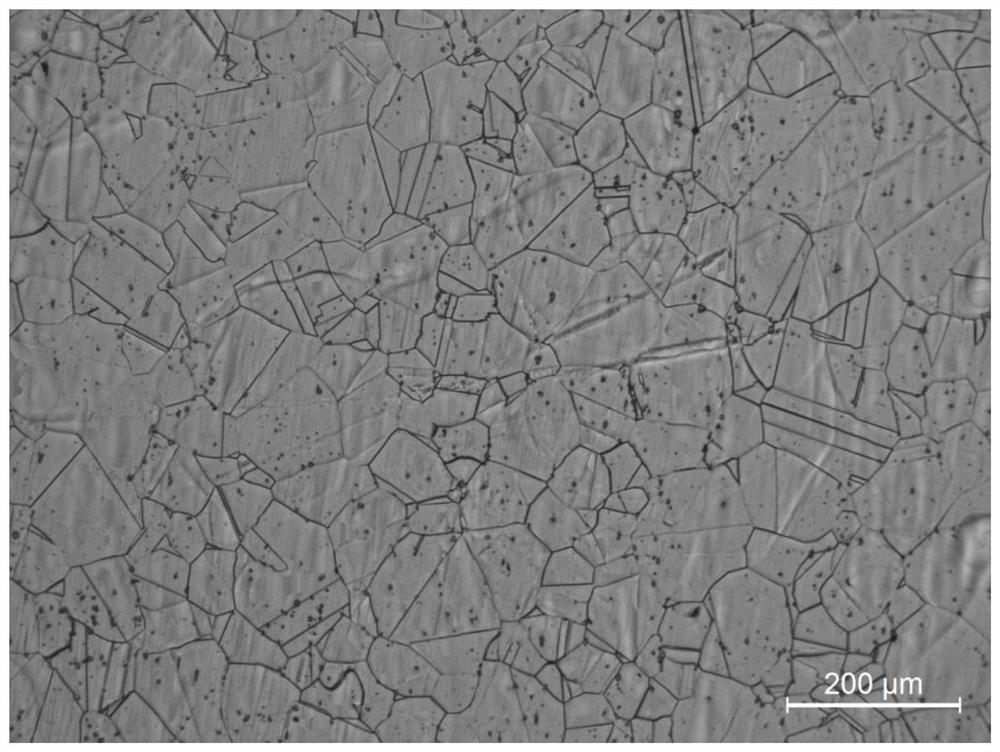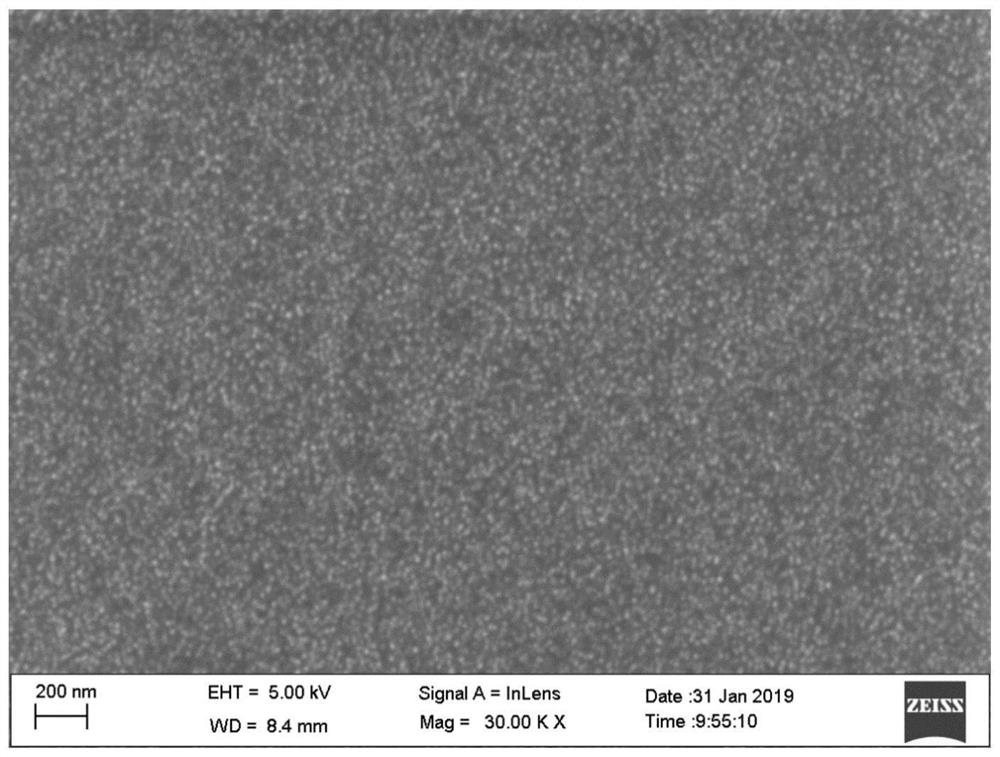A precipitation strengthened iron-based superalloy and its preparation method
An iron-based superalloy, precipitation strengthening technology, applied in the field of high-temperature metal structural materials, can solve the problems of high cost, unsuitable power plant boiler material selection, instability and other problems of nickel-based superalloys, and achieve excellent high-temperature durable strength performance and excellent durable strength Performance, the effect of improving the durability of the alloy
- Summary
- Abstract
- Description
- Claims
- Application Information
AI Technical Summary
Problems solved by technology
Method used
Image
Examples
Embodiment 1
[0032] By reasonably screening the contents of Ni, Al, and Ti elements and controlling their relative proportions, it is ensured that the alloy can still maintain a high volume fraction of Ni during service 3The presence of Al particles leads to good durable strength properties. The alloy is smelted in a vacuum induction furnace, and the obtained alloy includes: Ni: 36%, Cr: 17%, Mn: 1.0%, Si: 0.5%, C: 0.06%, Mo: 0.8%; W: 0.4% , Ti: 2.1%; Al: 1.4%, and the balance is Fe.
[0033] It adopts vacuum melting and casting molding, and homogenizes at 1170°C for 30 hours, and then conducts thermal deformation at 1050°C. The total deformation amount is not less than 60%, and the final pass deformation amount is higher than 25%. After deformation, solution treatment was carried out at 1100°C for 1 hour and cooled in air, followed by aging at 650°C and 750°C for 8 hours and 4 hours respectively and water cooling.
[0034] figure 1 It is the structure morphology of the alloy after heat...
Embodiment 2
[0038] The alloy is smelted in a vacuum induction furnace to obtain the alloy. The alloy includes: Ni: 25%, Cr: 19%, Co: 1%, Si: 0.1%, C: 0.03%, Mo: 0.5%. ; W: 0.5%, Ti: 2.1%; Al: 1.4%, and the balance is Fe.
[0039] It adopts vacuum melting and casting molding, and homogenizes at 1100°C for 50 hours, and then performs thermal deformation at 1020°C. The total deformation amount is not less than 60%, and the final pass deformation amount is higher than 25%. After deformation, solution treatment was carried out at 1080°C for 1 hour and cooled in air, followed by aging at 650°C for 20 hours and water cooled.
Embodiment 3
[0041] The alloy is smelted in a vacuum induction furnace to obtain an alloy, which includes: Ni: 37%, Cr: 18%, Co: 2%, Si: 0.2%, C: 0.1%, Mo: 0.4% ; W: 0.3%, Ti: 2.4%; Al: 1.2%, and the balance is Fe.
[0042] It adopts vacuum melting and casting molding, and homogenizes at 1130°C for 45 hours, and then conducts thermal deformation at 1120°C. The total deformation amount is not less than 60%, and the final pass deformation amount is higher than 25%. After deformation, solution treatment was carried out at 1090°C for 0.8 hours and cooled in air, followed by aging at 800°C for 8 hours and water cooled.
PUM
| Property | Measurement | Unit |
|---|---|---|
| particle size | aaaaa | aaaaa |
| particle size | aaaaa | aaaaa |
| diameter | aaaaa | aaaaa |
Abstract
Description
Claims
Application Information
 Login to View More
Login to View More - R&D
- Intellectual Property
- Life Sciences
- Materials
- Tech Scout
- Unparalleled Data Quality
- Higher Quality Content
- 60% Fewer Hallucinations
Browse by: Latest US Patents, China's latest patents, Technical Efficacy Thesaurus, Application Domain, Technology Topic, Popular Technical Reports.
© 2025 PatSnap. All rights reserved.Legal|Privacy policy|Modern Slavery Act Transparency Statement|Sitemap|About US| Contact US: help@patsnap.com



